The topics of authenticity and why people do what they do have been coming up a lot lately in both my personal and professional lives. From threads on LinkedIn to an art walk at my local museum, I’ve been noticing a variety of perspectives on this. All have validity. But what is useful? How is authenticity and the purpose that drives actions and outcomes related?
Let’s start with the basics. I googled “authenticity” and that revered source of all things people believe to be factual, Wikipedia, defines it as the degree to which one is true to one’s own personality, spirit, or character, despite the pressures of external forces. In terms of leadership, a LinkedIn thread I was following focused on the alignment between the walk and the talk. Interestingly, when the recession began to hit I noticed from my work that authenticity was now becoming a competitive advantage. I suppose it was a supply and demand issue, as hard times revealed the worst in many leaders, exposed for their duplicity. In fat times I guess it’s easy to overlook as long as everyone’s enjoying the party.
That’s a good segue into the topic of purpose, or why people do what they do. Let’s start at the top, the top tier
of what the Tribal Leadership folks call stages 4 and 5. For those unfamiliar with Tribal Leadership see some of my prior blogposts. Also check out the TL website. This is where people are coalesced around core values and a noble cause, and have the developmental capacity to deeply appreciate the value of collaboration for the sake of something bigger than the individual. Core values aren’t just any values, but those values that give life it’s vitality, the ones you can’t live without manifesting without dire consequences. A noble cause isn’t just any purpose. It’s big. Bigger than the individual. It’s for the greater good, of an organization, or of humanity.
I don’t think there’s a lot of debate about the value of that kind of purpose. Of course it would move people to do great things. One might even say it’s the source of all great things. But how does this apply to everyday people hunkered down doing their jobs? The customer service rep on the phone? The store manager? Even your doctor? Is everyone purpose driven, let alone acting authentically? Apparently not. Should they be? Could they be?
I noticed that when I introduce leaders to the Tribal Leadership model they are fairly universally interested in moving people up, including themselves, to the highest stages where people are no longer a pain the ass. A place where everyone connects the dots and does the right things. But I noticed a shadow side (you can’t have light without casting a shadow!). There’s invariably a disdain for all things below stage 4. Stages 4 and 5 are where that “we perspective” thrives and collaboration just happens. What’s not to like? As we all tend to do with hierarchies, we’re eager to jump ship and get to that higher level (or tell ourselves we’re already there). No leader left behind. Just knowing we’re not at or near the top is enough to move us into action. The positive take would be to say he’s doing the right thing even if for the wrong reason. But is he?
Here’s where authenticity may be rearing it’s head. I would say that unless the leader is herself at stage 4, looking out
for a greater good and operating from a values-based perspective, efforts aimed at collaboration and teamwork run the risk of being experienced as inauthentic, or at the least not resulting in the gains possible from a true “we-perspective.” And that has it’s own consequences. But there are nuances here. From a stage 3 perspective, such efforts would naturally, authentically, serve stage 3 goals for success and achievement. Stereotypically that’s probably the norm. But would words about collaboration, doing what’s right for the company and a sense of “us” ring true for most people? Would it land more like senior leadership continuing to pull down 7-figure salaries while there are layoffs and freezes on hiring or raises? Would efforts of support for upgrading the culture to the next stage be perceived as thinly veiled tactics to serve the leader’s agenda? Or would it be perceived from a stage lens as authentic and simply “demonstrate” that teamwork and collaboration isn’t all it’s cracked up to be? I see these as inquiries to engage in more than simple questions.
I once had a colleague tell me that you could never take another person to a place you yourself hadn’t been. I distinctly recall not liking to hear that. It meant I had to look in the mirror and objectively accept the work I had to do before I could do my work. That’s a lot of work in there. But I couldn’t honestly deny the truth in those words. Leaders do have to go first. That’s part of being a leader!
So what do you do when you have a stage 3 leader excited about upgrading the culture, and right now?
- First, that leader needs to assess what stage he is at. Authentically.
- If you’re not quite at stage 4, engage in getting there. See below and also these action steps.
- If you’re working with that leader you can do this concurrently while still working on upgrading the larger culture. The phrase “you’re not the teacher you’re the lesson” can go a long way here.
If you are that leader, find a mentor or coach who is already there. Seek out relationships with those you see as being at stage 4. As the Tribal Leadership folks say, pay attention to the language they use and the relationships they have. Once you understand those distinctions (read the book?) you will know what to look for. Or perhaps take the Tribal Leader Intensives. From speaking with my colleague who’s done that, I get the impression that’s a key point of them being intensives. They want you to get this in your bones, not just understand it in your head.
At some level we all have a nose for authenticity. Some better than others, but we know. Someone asked in a thread I was following why so many leaders get away with being inauthentic. There could be a number of reasons. If I’m at stage 3 too then any “we-talk” is occurring to me through my “me” filter also, so I don’t necessarily experience any disconnect! But that won’t ever lead to the gains possible from a truly stage 4 way of experiencing the world. Also from that frame of reference I myself may simply want to emulate that leader and enjoy his success. And if I’m at stage 2, well, it’s just my cross to bear. In any case, a developmental perspective opens up a broader scope of possibilities in understanding and acting upon these nuances.
I say if you’re going to make the investment to upgrade an organizational culture, protect your investment and do it right. Grow yourself first. A wiser man than me said “be the change you want to see in the world.” It’s worth the effort. For all of us.
What are your thoughts about this conversation? We’d love to hear from you!

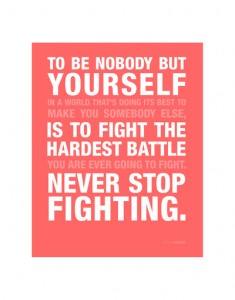
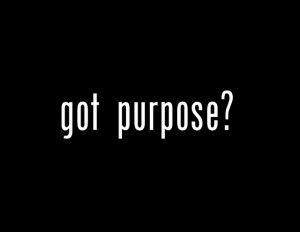

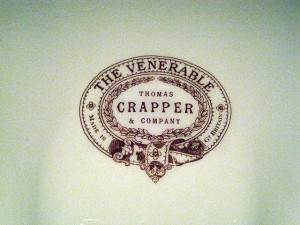


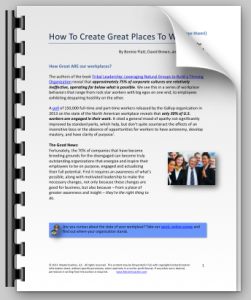
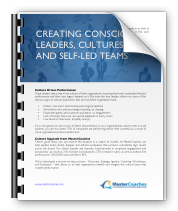
Social Links